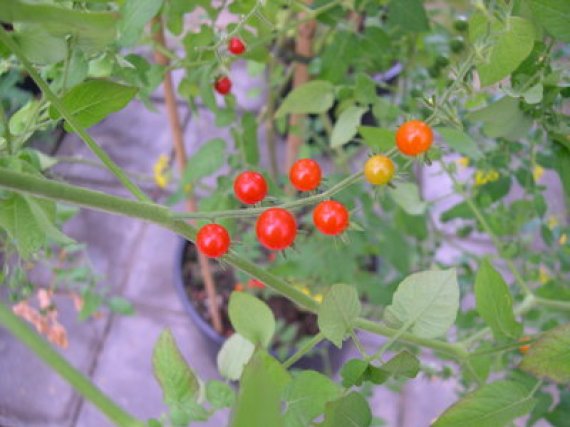The researchers who mapped the tomato genome have established that the genome of the original tomato plant suddenly tripled in size about 60 to 70 million years ago. ‘Such a big genome expansion points to extremely stressful conditions,’ says René Klein Lankhorst, the Wageningen coordinator of the tomato genome research project. ‘We suspect that the meteorite crash and the resulting solar eclipse had created conditions difficult for plants to survive. A distant ancestor of the tomato plant then reacted by expanding its genome considerably in order to increase its chances of survival.’ When conditions subsequently improved again, this ancestor of the tomato got rid of a lot of genetic ballast, but the genetic base for fruit formation had already been developed by then, the tomato fruit acquired its red colour and certain genes which produced toxins disappeared, says Klein Lankhorst. In this way, the tomato differentiates itself from a family member, the potato, which has no edible fruits. The plant researchers could ‘look back’ very far into the past by comparing the tomato plant genome with family members in the nightshade and other plant families. And they had the advantage of having almost mapped all the 35 thousand genes of the tomato, which made even small changes noticeable. For example, a comparison of the locally produced vegetable crop with the wild ancestor Solanum pimpinellifolium (probably brought to Europe by the Spanish) showed that the genome of the Dutch tomato differs by only 0.6 percent from that of its wild ancestor from the 15 th Century. Klein Lankhorst participated in an international consortium involved in tomato genome sequencing since 2004. It was only when this research group switched to new sequencing techniques in 2008 that a breakthrough could be made. Although the first analysis of the genome is published this week in Nature, the DNA information is in fact already available for researchers and plant breeders for two years. The researchers have now also placed about eighty pages of genome analyses on the website. This publication gives new insight which makes growing a salt-tolerant or an even more delicious tomato possible. But to do this, breeding companies would have to carry out additional research. Wageningen’s contribution to the research consortium was fairly big, says Klein Lankhorst, who is also the coordinator of the European research programme for tomatoes and potatoes, EU-SOL. Wageningen led the European part of the research work and had a key role in bio-informatics: interpreting information from millions of pieces of DNA in order to place the genes in the right order. The Wageningen biotech company Keygene also participated in the consortium because it constructed a so-called physical genome map of the tomato. Such a physical map was very useful in piecing together the puzzle with 35 thousand genes.
Red tomatoes thanks to meteorite
The meteorite which crashed into the Earth 60 to 70 million years ago, wiping out dinosaurs, had probably given us nice red tomatoes as well. This can be deduced from a tomato genome analysis, published on 30 May in Nature.

